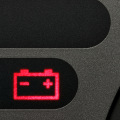Home maintenance can be a daunting task, especially for a new homeowner who has never seen a boiler up close, let alone a depleted one. But with the right preventive maintenance checklist, you can keep your home running smoothly and safely. A maintenance checklist is a document that contains the items that need to be reviewed or that have been reviewed. These elements will vary depending on the type of object being analyzed and the maintenance category.
A checklist is a list of items that you need to check, review, or inspect. They are used in a variety of fields, from construction to healthcare. A preventive maintenance checklist helps identify maintenance actions on equipment to keep it in good condition and improve plant reliability. If your property has any trees, have a certified arborist inspect them, who can check for signs of disease or dead branches and detect problems before they worsen and kill a tree. The untrained eye could miss signs of damage, and a dead or dying tree poses a danger to your safety, home, and neighboring properties. Even if you don't use the chimney regularly, the chimney still needs regular monitoring.
A chimney transports hazardous gases from the fireplace, wood stove, or oven outside your home, helping to keep indoor air breathable. According to the Chimney Safety Institute of America, your chimney should be inspected annually and cleaned regularly based on how often you use it. Once the leaves fall, call your gutter company to clean and inspect them. Any repairs that need to be done to gutters or downspouts must be done before winter arrives. Your workers should also inspect the roof for loose or broken shingles.
Schedule work before heavy snowfall, which could leave frozen leaves and debris in gutters, faucets, and hoses. Before the first freeze, drain and turn off the outside faucets so they don't freeze. Roll up the hoses and store them for the winter. Have Your Furnace and Ducts Serviced. A clean system will be more energy efficient and an inspection will alert you to problems.
Check and replace air filters, as needed. Test the thermostat to make sure it works properly. Make sure that the heating grilles are open and that nothing blocks them. If you didn't clean and inspect your chimney in the spring, call a chimney sweep now and do it before you start using the chimney or oven. Clothes dryers cause 2,900 fires a year, and many fires occur in the fall and winter, according to the U.
S. Fire Administration. Lint is a major culprit, so an HVAC specialist who specializes in dryer vents or ducts inspects and cleans annually. A preventive maintenance checklist is a set of tasks that the technician must complete to close a preventive maintenance work order. Approval or reject preventive maintenance checklists can identify problems and avoid major problems by scheduling maintenance earlier than usual.
An improved maintenance schedule ensures that all equipment is serviced with the appropriate frequency to reduce the amount of downtime required for maintenance. Having a preventive maintenance checklist and procedures makes it easy to keep up with regular maintenance, no matter what limitations you may have in terms of personnel, time, and budget. Consider these preventive maintenance checklists as a starting point when thinking about maintenance activities that can help keep your installation running. Because preventive maintenance checklists provide consistency, they create an excellent basis for measuring maintenance activity. Preventive maintenance checklists go by several names, the most common being preventive maintenance task lists or task groups. Any preventive maintenance program must be clearly defined, with well-documented maintenance activities for each piece of equipment.
So, before starting the next stage of your maintenance journey, make sure you have well-crafted maintenance checklists that act as a compass on your path to greater efficiency, better expenses, and safer operation. Preventive maintenance checklists can help you monitor your assets based on maintenance objectives, expected needs, and past performance.







